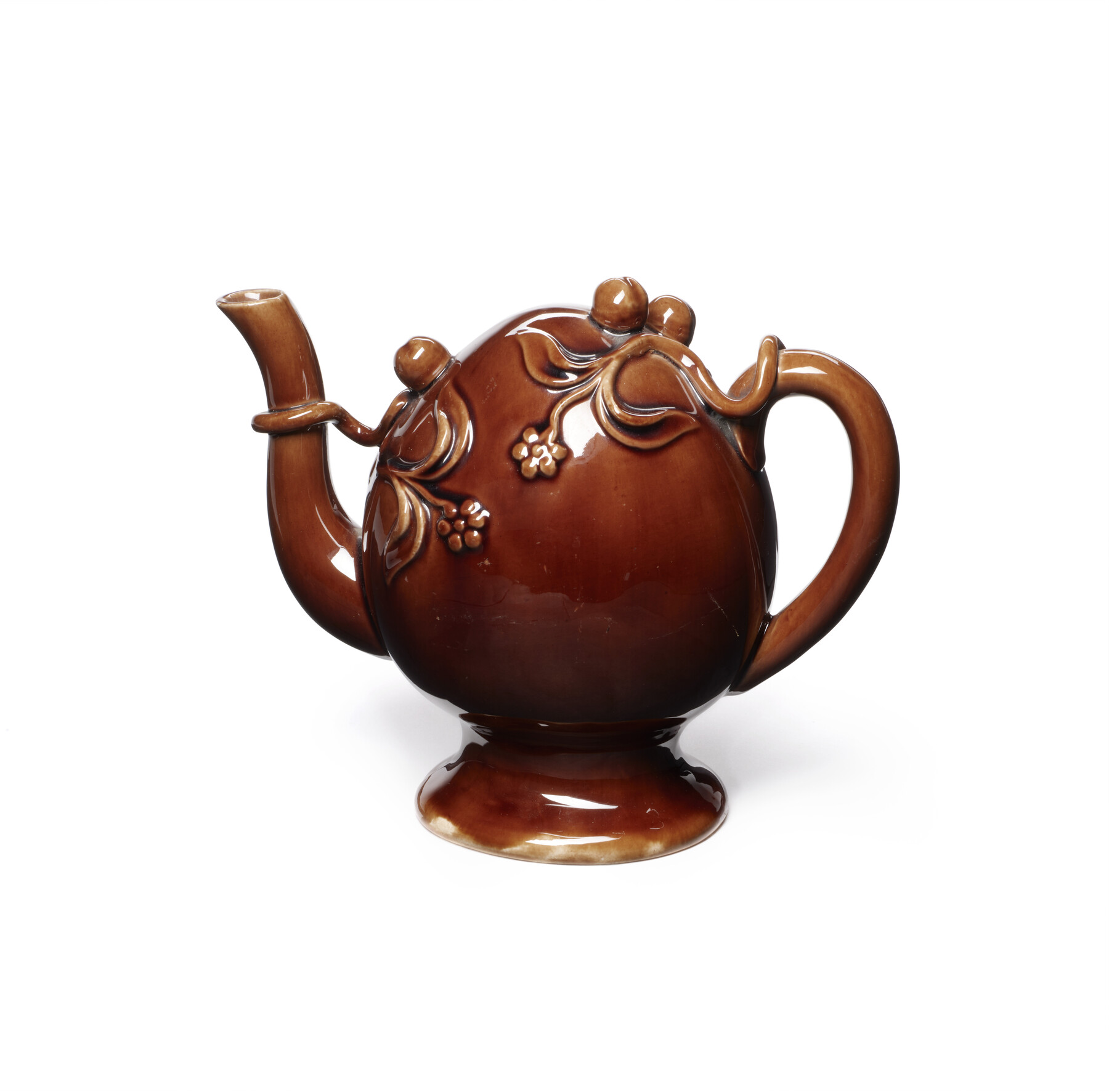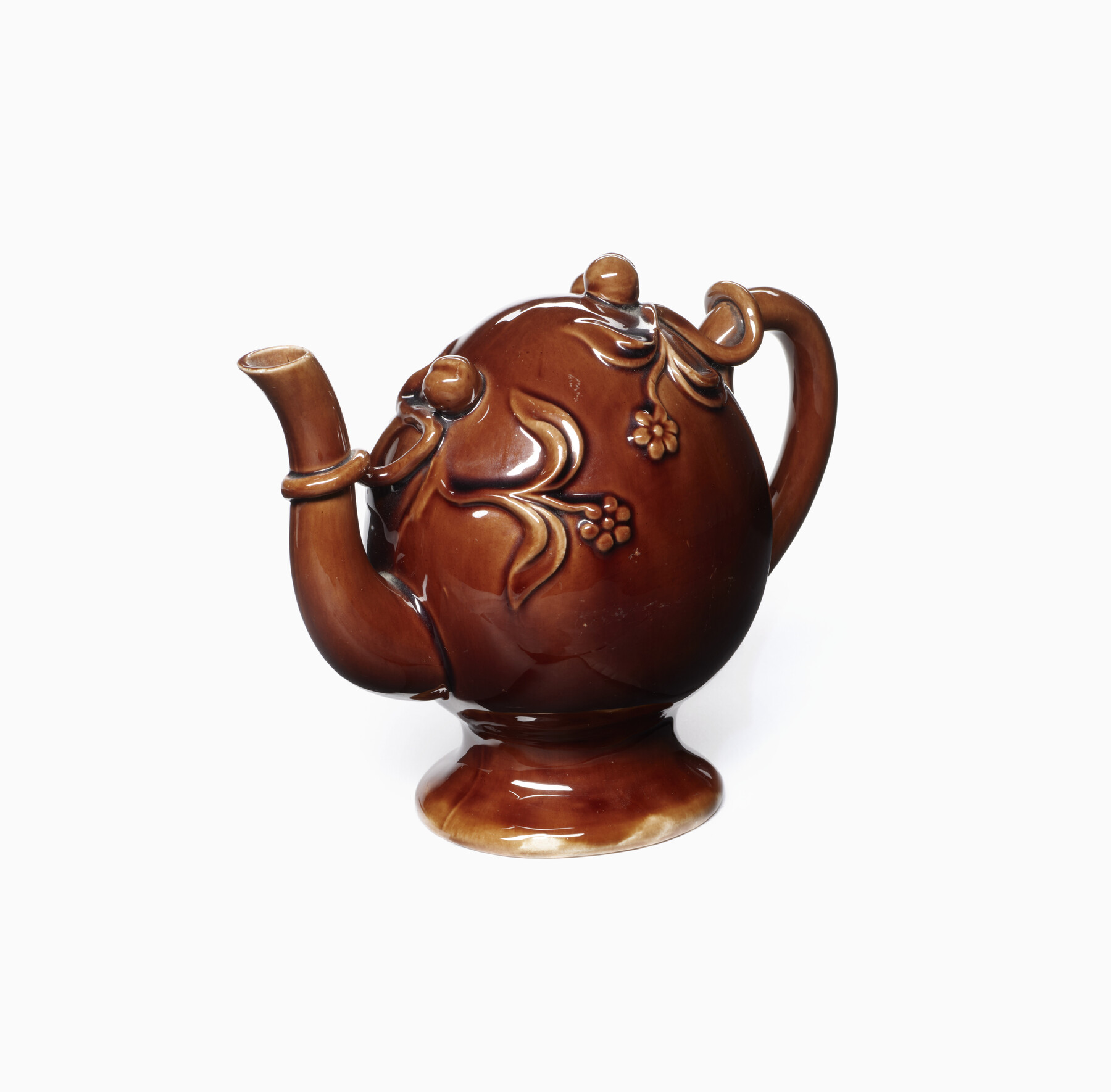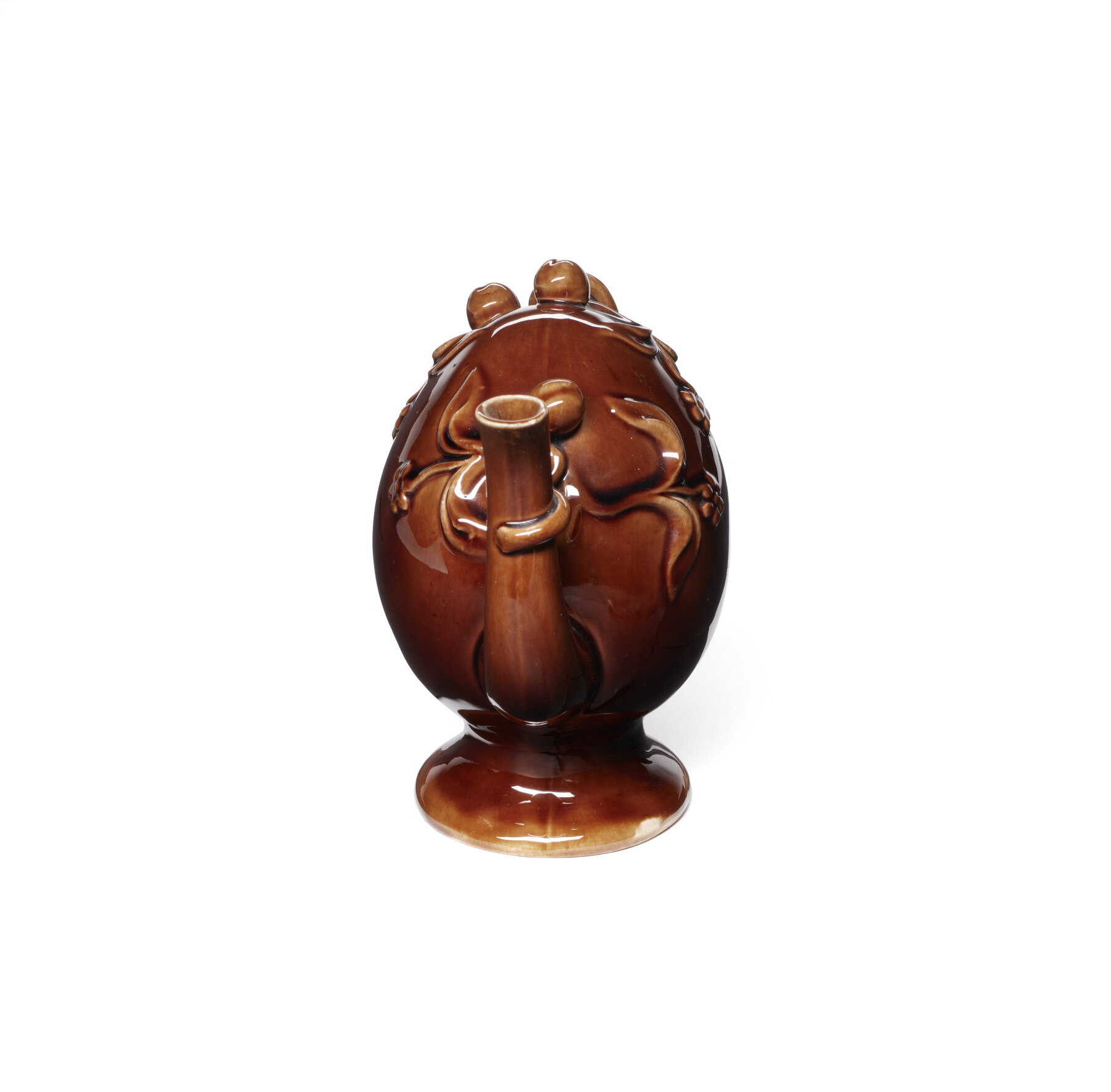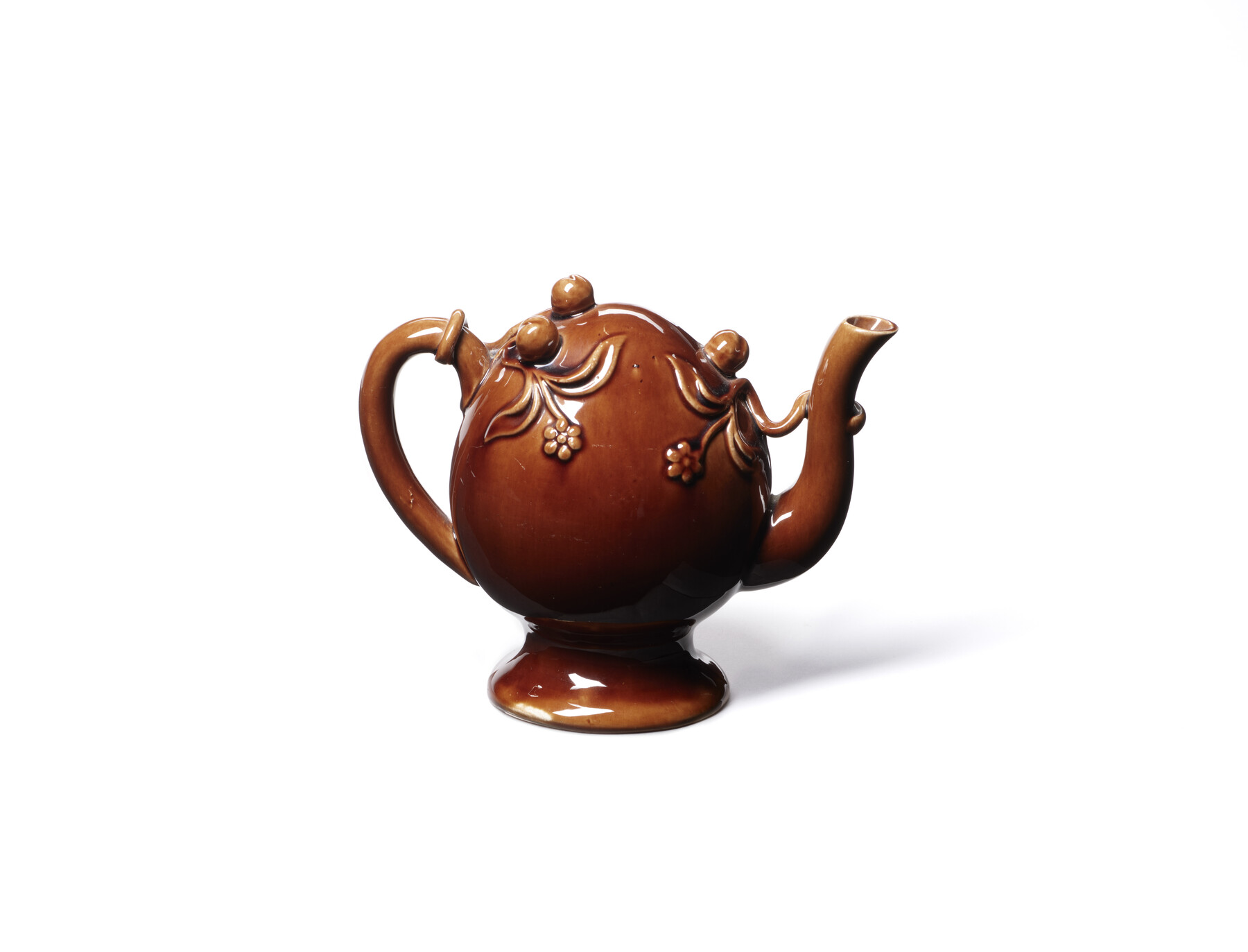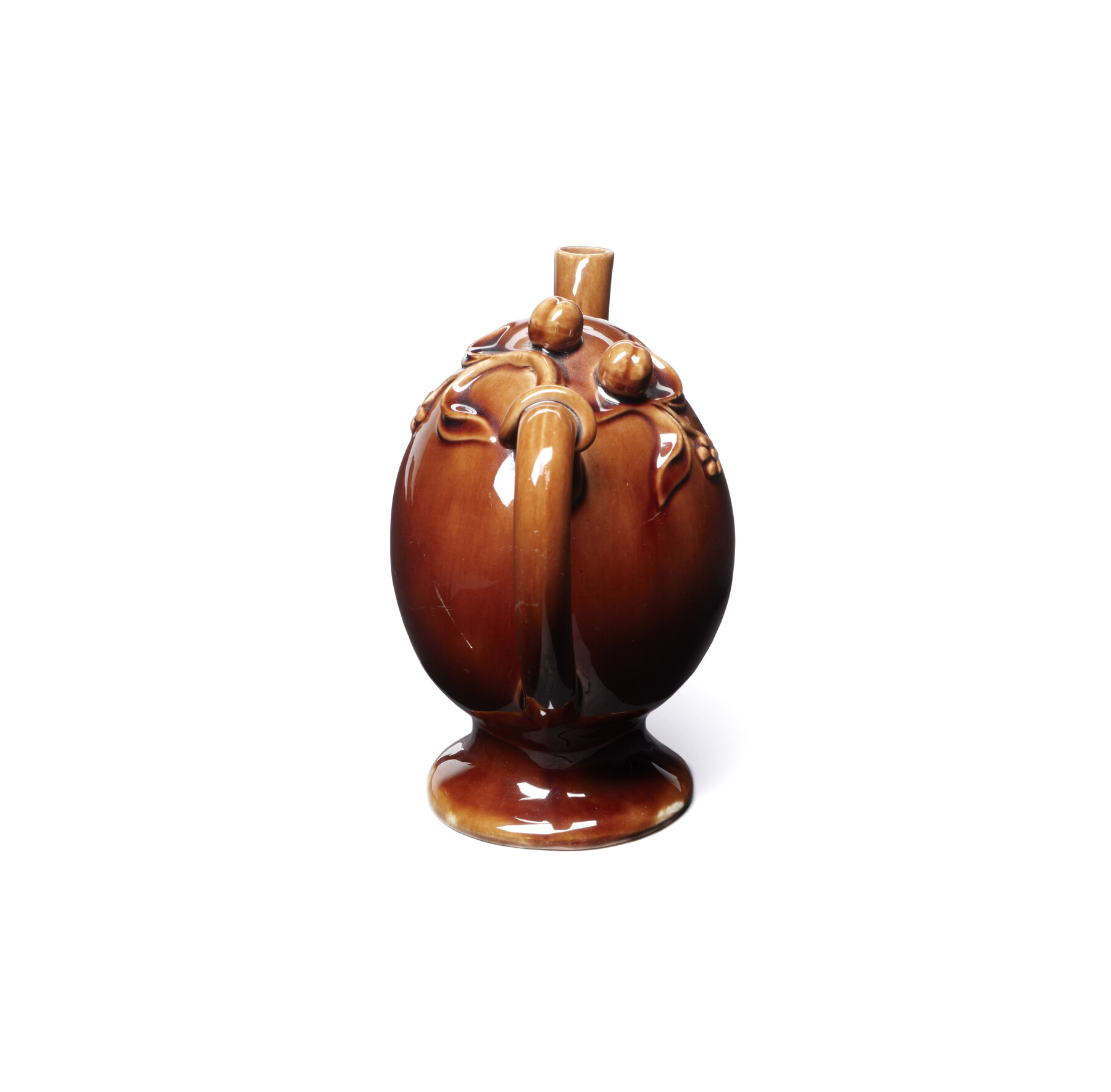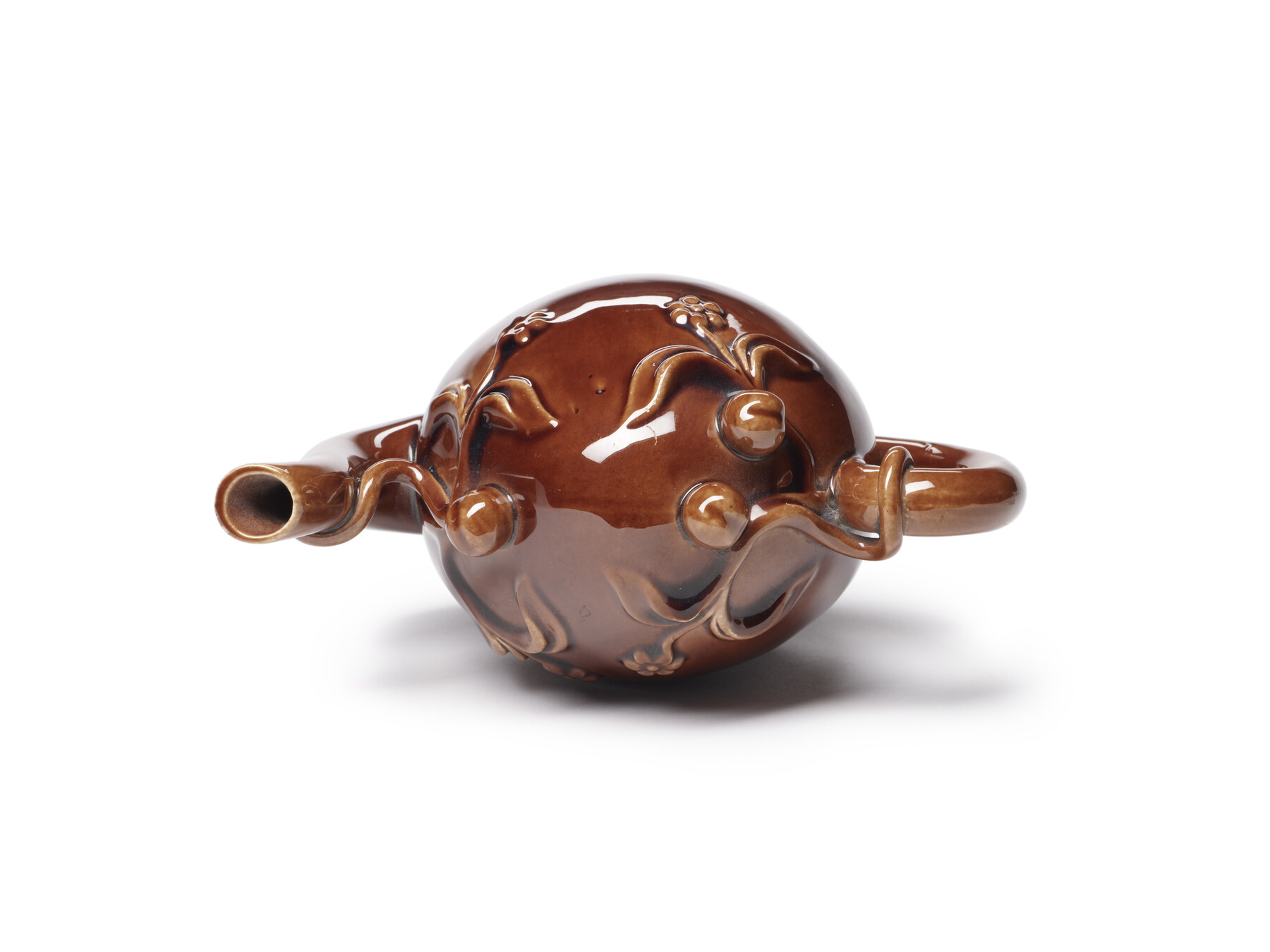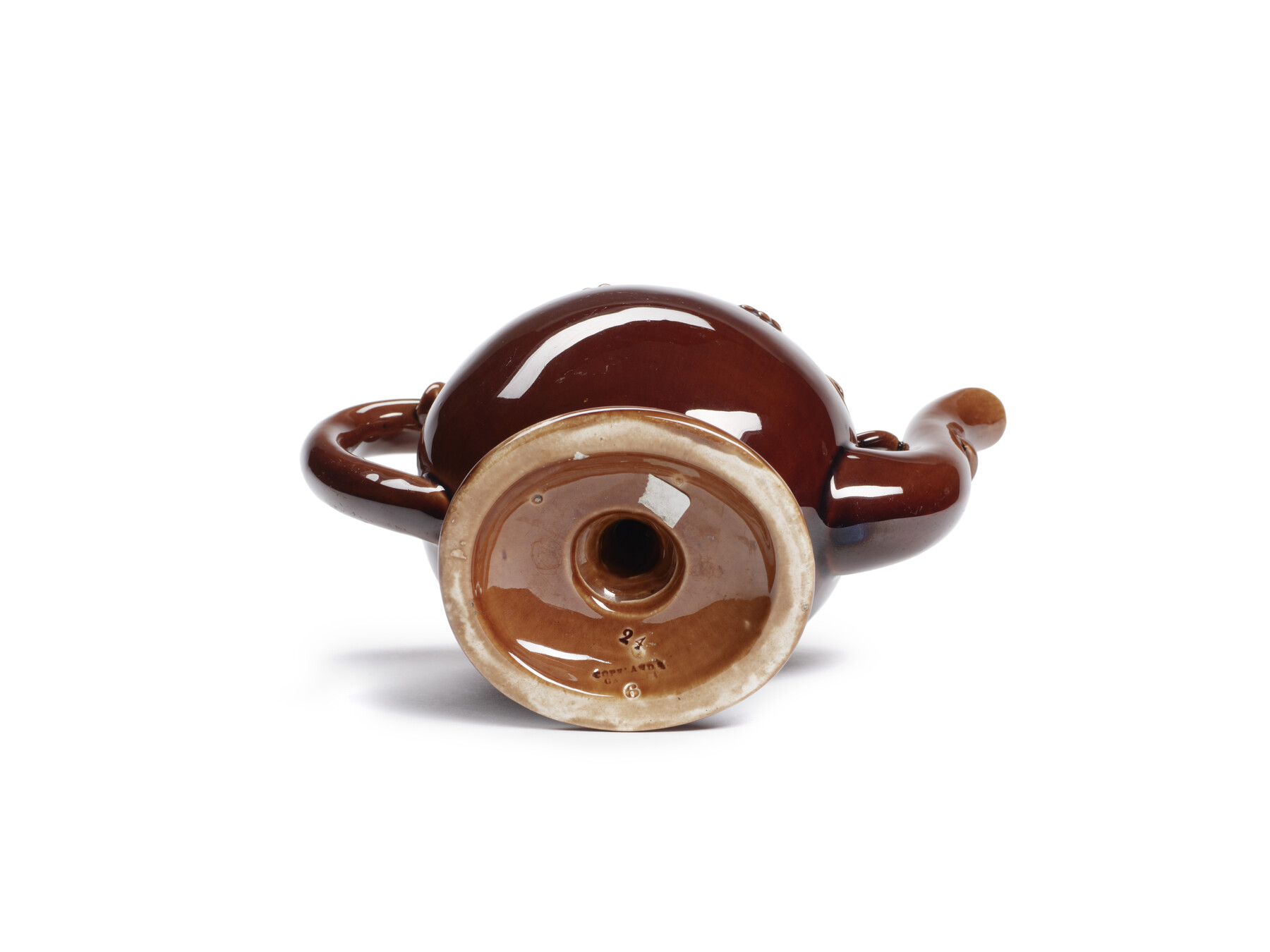Hot Water Pot
In 1824, William Taylor Copeland (1797–1868) became a partner in the firm founded in 1770 by Josiah Spode I. The Spode firm was one of the largest and most important English ceramic manufacturers of the late 18th and 19th centuries. The company was responsible for perfecting transfer-printing on ceramics as well as developing a porcelain body that incorporated bone ash, the “bone china” that English manufacturers soon became well-known for. In 1833, Copeland bought out the Spode heirs and entered into a partnership with Thomas Garrett (1785–1865). They operated the factory under the name Copeland & Garrett and were able to maintain its position as a leading ceramic manufacturer. This partnership continued until 1847, when Copeland became the firm’s sole proprietor.
This Copeland & Garrett model’s form can be ultimately traced to Chinese pots in the shape of stylized peaches, including examples exported to Europe in the 17th and 18th centuries. These Chinese pots inspired makers there as early as the 1720s, when Meissen, the first European factory to successfully manufacture porcelain, created a version. In Britain the form seems to have been first made by the mid-1820s, likely by Brameld & Co. at the Rockingham Works in Swinton, South Yorkshire. The Brameld examples are very similar in form to the Copeland & Garrett model. These are often called “Cadogan teapots” after William Cadogan (1675–1726), 1st Earl of Cadogan, or his Dutch-born wife Margaretta (Munter) Cadogan (ca. 1675–1749). Though unsubstantiated, the Cadogans supposedly owned the Chinese pot after which the English versions were modeled. Indeed, Brameld & Co. produced versions of this form exclusively for the London ceramics and glass retailer John Mortlock of Oxford Street which are marked “MORTLOCK’S CADOGAN”.
The Chinese, Meissen, Brameld, and Copeland & Garrett models have often been labeled “teapots”, but this is highly unlikely. They are filled through an opening in their base which connects to an interior reservoir and emptied through their spouts. The interior reservoir cannot be accessed otherwise, thus making them impractical for the brewing or serving of tea or coffee. The Chinese models likely were used to serve wine, or possibly hot water, and the German and British versions were likely also used to hold hot water that might be used in the making or serving of tea. It is also almost certain they were appreciated for their novelty value.
Inscription
Provenance
Provenance (from the French provenir, 'to come from/forth') is the chronology of the ownership, custody, or location of a historical object. Learn more about provenance at the Walters.
Sale, Majolica Auctions by Michael G. Strawser, Fort Wayne, Indiana, 26-27 March 1999, lot 518; purchased by Deborah and Philip English, Baltimore, 1999; given to the Walters Art Museum, 2024.
Measurements
H: 6 × W: 7 3/8 × D: 3 3/4 in. (15.2 × 18.7 × 9.5 cm)
Credit Line
Gift of Deborah and Philip English, 2024
Location in Museum
Not on view
Accession Number
In libraries, galleries, museums, and archives, an accession number is a unique identifier assigned to each object in the collection.
In libraries, galleries, museums, and archives, an accession number is a unique identifier assigned to each object in the collection.
48.2910

